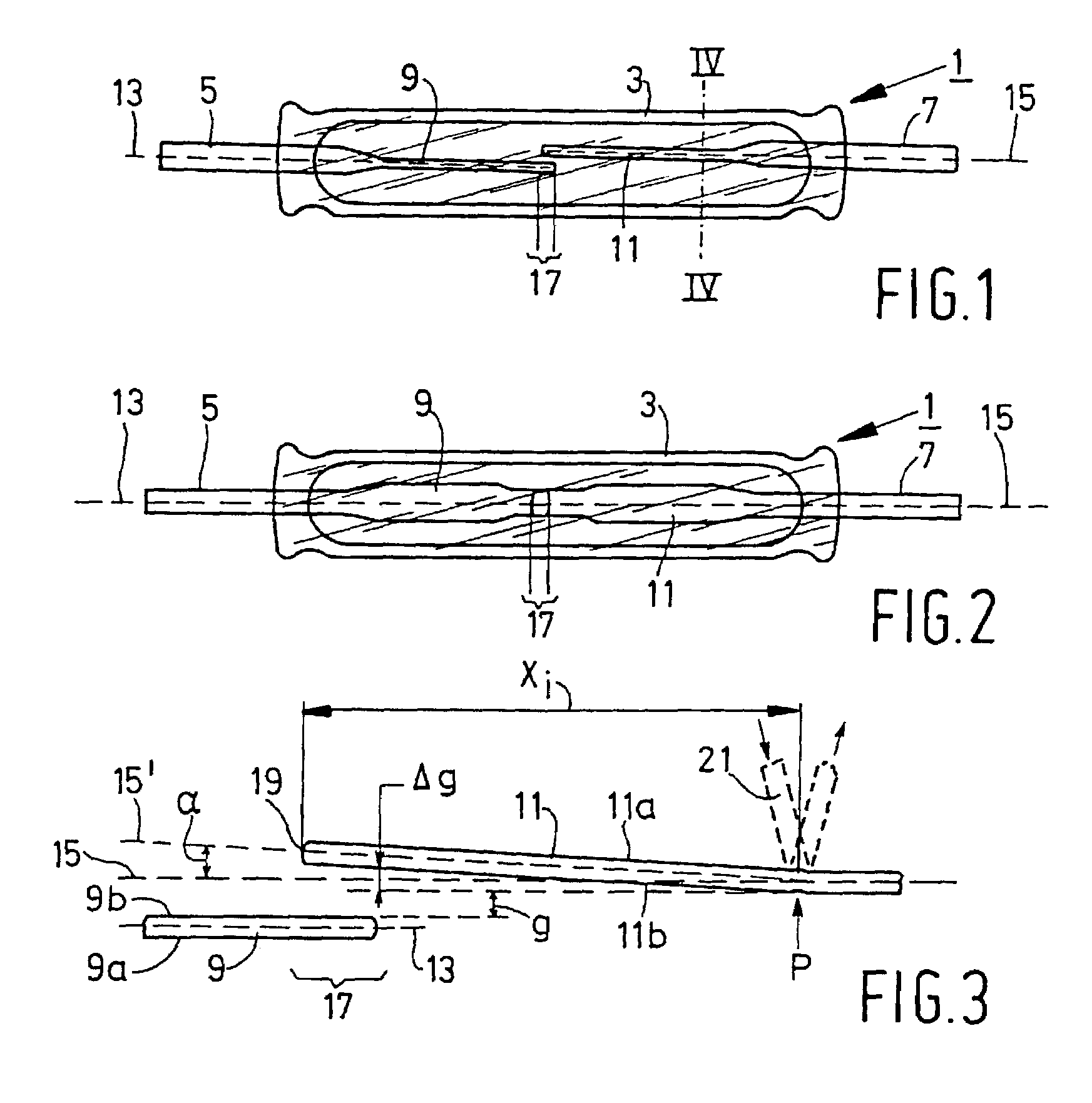Method for adjusting the switch-gap between the contact tongues of a reeds switch
- Summary
- Abstract
- Description
- Claims
- Application Information
AI Technical Summary
Benefits of technology
Problems solved by technology
Method used
Image
Examples
Embodiment Construction
[0017]The reed switch, which is indicated by numeral 1 in FIG. 1, comprises a glass envelope 3 containing to metal tongues 5, 7, which have been melted into the opposite ends thereof. The tongues 5, 7, which are made of a soft magnetic material and which extend substantially parallel to each other, have flattened end portions 9, 11. Said portions 9, 11 overlap in the area that is indicated by numeral 17. The longitudinal axes 13 and 15 of the tongues 5, 7 are also shown. FIG. 2 shows the reed switch of FIG. 1 in side elevation.
[0018]FIG. 3 shows the central portion of the reed switch of FIG. 1 in greater detail. As shown in the figure, the switch is not in its activated position, i.e. an open gap is present between the flattened portions 9 and 11. Each of said portions 9, 11 has a rear side 9a and 11a and a front side 9b and 11b. The minimum distance between the front sides 9b and 11b in fact determines the value of the switch-gap. As described in EP 0731978, said switch-gap must be...
PUM
| Property | Measurement | Unit |
|---|---|---|
| Temperature | aaaaa | aaaaa |
| Length | aaaaa | aaaaa |
| Melting point | aaaaa | aaaaa |
Abstract
Description
Claims
Application Information
 Login to View More
Login to View More - R&D
- Intellectual Property
- Life Sciences
- Materials
- Tech Scout
- Unparalleled Data Quality
- Higher Quality Content
- 60% Fewer Hallucinations
Browse by: Latest US Patents, China's latest patents, Technical Efficacy Thesaurus, Application Domain, Technology Topic, Popular Technical Reports.
© 2025 PatSnap. All rights reserved.Legal|Privacy policy|Modern Slavery Act Transparency Statement|Sitemap|About US| Contact US: help@patsnap.com


